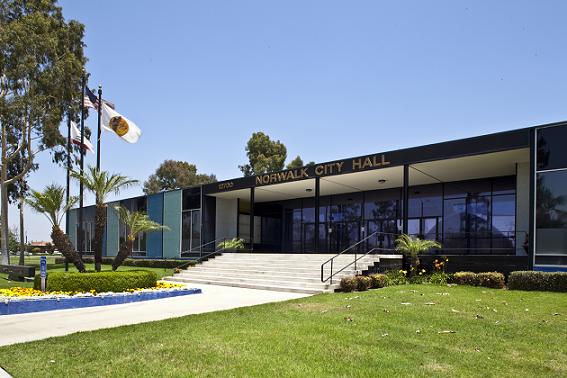By Arnold Adler
Contributing Writer
NORWALK — In the coming months, city officials will focus on projects along two major corridors, based on marketability advice from developers and input from residents.
Called “The Heart of Norwalk Study,” the area in question is the Firestone Corridor, which is Firestone Boulevard from Imperial Highway southeast to Rosecrans Avenue; and San Antonio Village, generally southeast of San Antonio Drive and the Santa Ana (5) Freeway; also Front Street, east from San Antonio Drive and south of Firestone Boulevard.
Residents feel that Norwalk desperately needs higher end retail, restaurants and entertainment, and they believe that highly visible upgrades of public streets and open spaces can help attract such tenants to the city, Community Development Director John Ramirez and Senior Planner Beth Chow said in a written report to the council.
The plan calls for a massive city investment in upgrading its infrastructure and surveying participants and developers, the report said. But residents responding to a separate survey, rejected a proposed commercial development on the two-acre north lawn of City Hall, the location for community events and fund-raising carnivals, the report said.
That area is part of a plan called “The Walk,” which would make the area around City Hall an entertainment center.
According to the staff report, developers feel that Norwalk’s outdated plans, zoning maps and development standards tend to discourage them from undertaking the large effort required to prepare proposals and to pursue entitlements.
“Unusually high residential parking requirements and prohibition of tandem parking were specifically mentioned,” Ramirez and Chow said in their report.
The seven-month study, financed by a $100,000 grant from the Southern California Association of Governments was approved by City Council July 6.
The study, conducted by the Arroyo Group, zeroed in on three districts and suggested types of development. They included the Front Street Historic District, a transit-oriented residential district off of Firestone Boulevard and the Town Square District at Rosecrans Avenue and Pioneer Boulevard.
“These areas all provide opportunities for growth both in the commercial and housing sectors, while balancing place making and open spaces,” the staff report said.
Ramirez and Chow told the Chow the study becomes an aspirational goal for the city, which would lead to additional work in the form of a specific plan for the study areas.
“The community outreach process, which is a part of the study, … implements a listening approach, where members of the community provide the values, knowledge and ideas that inform the … development of the plan.
The Arroyo Group told the council that within the study area, there were limited housing developments, but also found that there is a market to build more condo-type housing, and the rental housing market is strong, with the strongest rental rates for studio type housing.
“Through additional analysis, the consultants will look at various scenarios related to medium-density mixed use development, high-density residential mixed use development, and high-density attainable residential development,” Ramirez and Chow said.
According to the report, the business and development communities are anxious to see new commercial amenities and housing in the Firestone Corridor/San Antonio Village area.
“These include the carwash site which is now on the market, the bank building on the southeast corner of San Antonio and Firestone, which is seeking a gasoline service station and/or minimarket developer, and Norwalk Town Square, which is aggressively seeking commercial tenants and considering recycling a portion of their property into a small residential or mixed-use development.
“The development community believes that the city needs to do more to provide attractive infrastructure and community amenities to support increased private investment in Norwalk, Ramirez and Chow said.
“Most developable sites are currently zoned for commercial or industrial use, for which there is currently a relatively weak market.”
“From a residential standpoint, most felt that the city was most receptive to townhome-type ownership housing, discouraging rental housing and taller, more urban buildings.
“Fortunately, according to developers, the current market for medium density ownership housing is strong in Norwalk,” Ramirez and Chow said.
The Norwalk Planning Commission recommended approval of the plan June 23.












